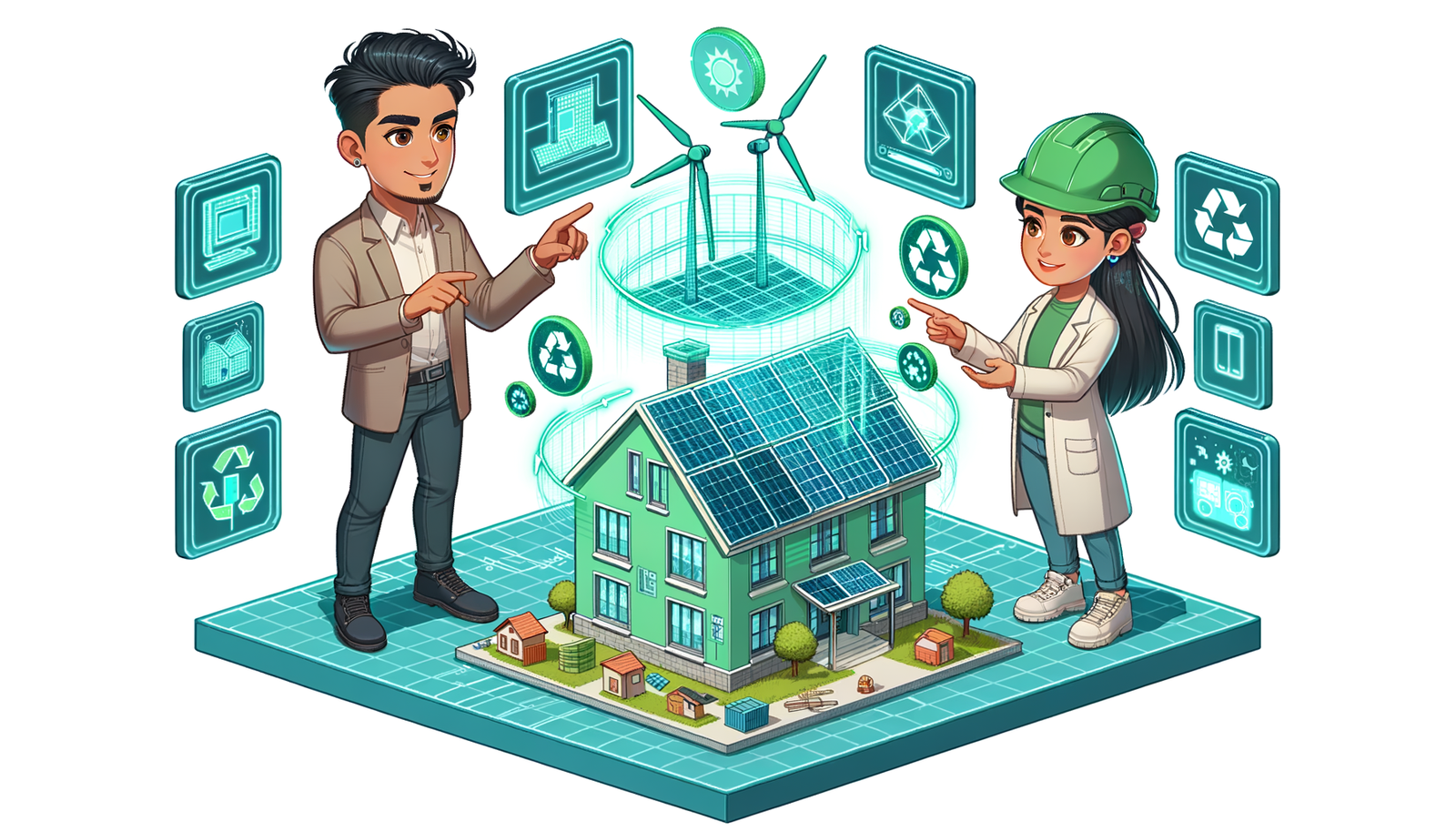Your Cart is Empty
Customer Testimonials
-
"Great customer service. The folks at Novedge were super helpful in navigating a somewhat complicated order including software upgrades and serial numbers in various stages of inactivity. They were friendly and helpful throughout the process.."
Ruben Ruckmark
"Quick & very helpful. We have been using Novedge for years and are very happy with their quick service when we need to make a purchase and excellent support resolving any issues."
Will Woodson
"Scott is the best. He reminds me about subscriptions dates, guides me in the correct direction for updates. He always responds promptly to me. He is literally the reason I continue to work with Novedge and will do so in the future."
Edward Mchugh
"Calvin Lok is “the man”. After my purchase of Sketchup 2021, he called me and provided step-by-step instructions to ease me through difficulties I was having with the setup of my new software."
Mike Borzage
Advancing Sustainable Design: The Role of Eco-Friendly Software in Architecture and Engineering
May 11, 2025 5 min read


Setting the Stage for Sustainable Design Software
In today's rapidly evolving design landscape, the **sustainable design software** movement is reshaping the way professionals approach architecture, product development, and engineering computation. This innovative branch of technology is at the forefront of addressing eco-friendly project challenges and ensuring that the process, from planning to production, prioritizes resource conservation and environmental responsibility. Sustainable design software extends beyond the mere creation of virtual models by integrating performance metrics that assess energy consumption, **carbon footprint**, and overall environmental impact. By leveraging technologies that combine advanced simulation techniques with data analytics, these tools empower design teams to explore multiple iterations and alternatives before proceeding to physical realization, meaning that the negative impacts on ecosystems can be minimized in the earliest stages of a project.
Defining Sustainable Software and Its Relevance
The evolution of sustainable design software is rooted in the need for more conscious decision-making across various industries. Over the years, design software has pivoted from being a tool solely for geometric modeling to becoming an intelligent platform that underpins environmentally responsible practices. The adoption of these tools is a direct response to the rising environmental challenges such as climate change and resource scarcity, thus enabling firms to meet the regulatory demands with greater precision while reducing operational risks. Today, architects, engineers, and product developers use sophisticated features that offer real-time feedback on environmental metrics. Additionally, the incorporation of sustainability metrics allows companies to project the long-term ramifications of design choices on both the natural environment and overall project viability. In doing so, sustainable design platforms have become a critical component in the competitive marketplace where environmental considerations are not just a regulatory checkbox, but a core value that differentiates successful projects from otherwise standard output.Key Sustainable Features in Eco-Friendly Design Tools
Modern eco-friendly design tools offer a myriad of features that set them apart from conventional software. One of the foundational aspects is the introduction of **integrated environmental impact analysis**, a feature that enables users to measure energy consumption, quantify carbon emissions, and assess resource usage with high precision. These systems allow designers to not only visualize their final representations but also to run a series of simulations that predict the environmental cost of their choices. A deeper dive into this topic reveals several sub-components. The incorporation of material efficiency and waste reduction simulations provides users with the means to optimize material usage. This is further enhanced by the ability to experiment with recycled or low-impact materials in a virtual environment, ensuring that material selection is both sustainable and efficient. Moreover, the lifecycle and compliance assessment feature practically automates the stringent process of regulatory checks, maintaining adherence to international standards and guidelines dedicated to sustainable construction or manufacturing. Lastly, the addition of real-time feedback loops and design iteration tools means that designers can quickly rework aspects of their models to improve sustainability performance. By blending these features into a holistic design experience, eco-friendly tools not only encourage environmental stewardship but also drive innovation in traditional workflows.
Environmental Impact Analysis and Material Optimization
These software tools often integrate modules that calculate key metrics such as energy consumption and carbon footprint during the early stages of a project. The design process now includes a comprehensive analysis of resource usage, allowing users to pivot towards more efficient materials and construction practices. Alongside this, material efficiency simulations come into play by offering dynamic solutions to reduce waste throughout the production cycle. Some of the core functionalities include:- Real-time simulation of environmental impact under various design modifications.
- Automated calculations that inform design choices based on energy and resource consumption.
- Optimization modules designed to suggest alternative materials that have a lower environmental burden.
Implementation Strategies and Real-World Applications
Transitioning towards a design workflow that fully embraces sustainability metrics and eco-friendly practices requires a well-thought-out strategy, training, and cross-disciplinary collaboration. Organizations are increasingly recognizing that embedding sustainability in the development process goes hand in hand with leveraging advanced design software that offers organic integration of environmental impact assessments, lifecycle analysis, and material efficiency optimization. The best practices for integrating such features into existing design workflows involve comprehensive team training and the creation of specialized roles focused on sustainable practices. For instance, professionals can adopt modules designed for iterative design improvements that offer immediate feedback based on continuously evaluated environmental parameters. This ensures that sustainability is a priority from the early prototype stage through to the final design iteration. Building a culture of innovation among teams can be further achieved by establishing forums and workshops where architects, engineers, and sustainability experts share insights and update best practices. Such collaborative efforts are essential for breaking down traditional silos within companies and encouraging a more holistic approach to project planning and execution.
Best Practices for Integrating Sustainability Features
Several strategies can optimize the implementation of sustainable features in everyday design workflows:- Training and development: Equip design teams with the necessary skills and knowledge to fully utilize new software functionalities.
- Regular workflow assessments: Adapt current processes to incorporate sustainability metrics by evaluating the performance of each design iteration.
- Collaboration frameworks: Foster cross-disciplinary collaboration by establishing regular meetings and shared platforms, ensuring alignment between architectural design and sustainability requirements.
Conclusion and Transformative Impact of Sustainable Software
Sustainable design software stands as a transformative tool in the evolving landscape of design and construction, proving to be a vital asset in navigating environmental challenges while pushing the boundaries of innovation. As design software evolves to incorporate advanced simulation capabilities, lifecycle assessments, and real-time iterative feedback, industry professionals are empowered to deliver projects that excel in both performance and environmental responsibility. The sustainability metrics and eco-friendly features embedded within modern design platforms provide a clear roadmap for minimizing ecological footprints and enhancing resource efficiency. This transformation underscores the importance of **environmental considerations** in every phase of design, from the initial drafting of blueprints to final product realization. By seamlessly integrating automated environmental impact analysis, optimized material usage, and regulatory compliance checks into their workflows, professionals from diverse fields such as architecture, engineering, and product development can now achieve a level of precision and foresight that was previously unattainable.
Encouraging Continued Innovation and Collaboration
The future of sustainable design relies heavily on the continuous evolution of these software solutions. As industries become more interconnected and environmental standards become increasingly stringent, the push for sustainable practices will drive further enhancements in design software. Embracing a collaborative approach—where insights from multiple disciplines converge to establish best practices—will be essential for meeting the growing demand for eco-friendly project outcomes. Key strategies for fostering this environment include adopting new technologies, encouraging ongoing training, and supporting research initiatives that further the capabilities of sustainable software tools. Furthermore, as companies implement these tools, they often notice improved efficiency, cost savings, and a more robust design process that anticipates future challenges related to resource scarcity and environmental degradation. This holistic approach not only sets a strong foundation for continued innovation but also serves as a beacon for industry-wide adoption of green practices. By emphasizing a long-term vision that includes both economic and environmental benefits, professionals are well-positioned to spearhead a design revolution that redefines the relationship between technology and sustainability in the modern world.Also in Design News

Cinema 4D Tip: Optimizing Workflow with Selective Keyframing in Cinema 4D
October 15, 2025 3 min read
Read More
Bluebeam Tip: Maximizing Efficiency with Bluebeam Revu's Text Box Tool for Clear and Impactful PDF Annotations
October 15, 2025 2 min read
Read More
ZBrush Tip: Enhance Your ZBrush Workflow with the Curve QuadFill Brush
October 15, 2025 2 min read
Read MoreSubscribe
Sign up to get the latest on sales, new releases and more …


